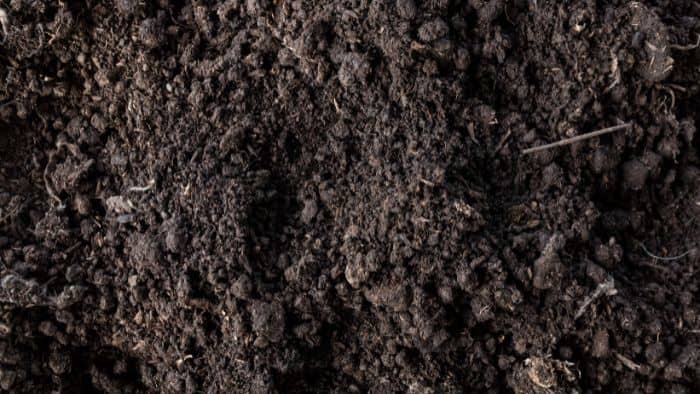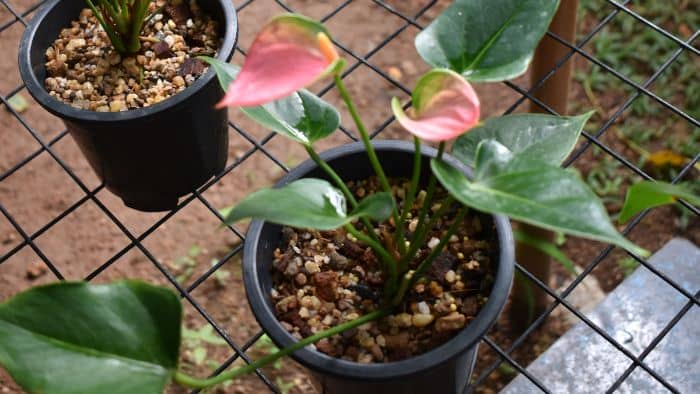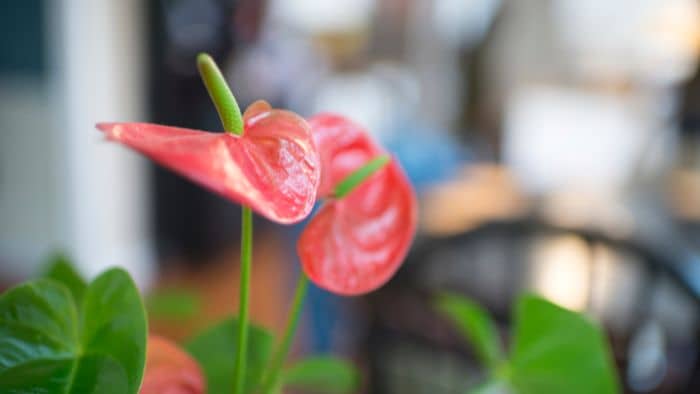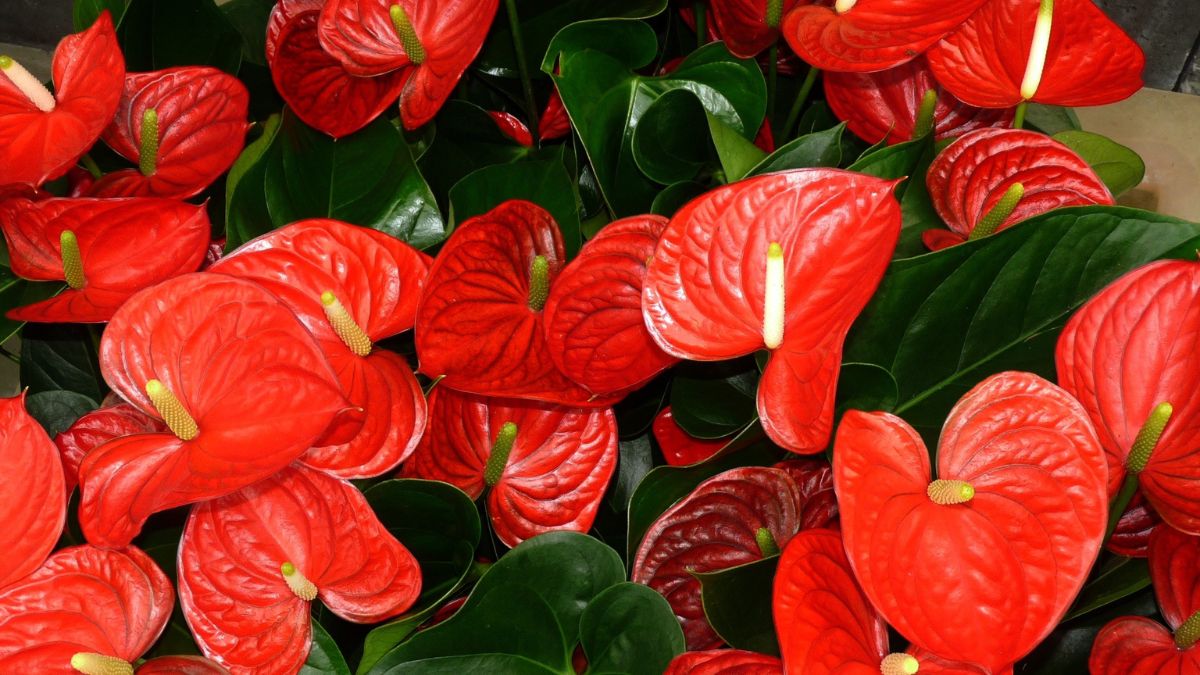If you want to know what is the Best Potting Soil for Anthurium, then the information in this blog post would be of great benefit to your gardening endeavors. The biggest genus of the arum family, Araceae, Anthurium has around 1,000 species of flowering plants. Tailflower, flamingo flower, and laceleaf are some of the other common names for this plant.
Anthuriums are good indoor plants and are more frequently cultivated as houseplants or in greenhouses. This is because they have specific care requirements, even though they can be grown outside in the garden in warm climes. They develop moderately, depending on how much light they receive.
However, extended amounts of direct light are known to scorch their leaves. Depending on the amount of maintenance and care they are afforded, these gorgeous plants can live for more than five years if cultivated in an enclosed environment. Multiplying them to extend their lifestyle is also possible. We have more information that will interest you about these glorious plants below.
Best Potting Soil For Anthurium
Just as all plants have their nutrient, mineral, water, and light demands, so do these ones. It is an easy-going low maintenance houseplant that enjoys indirect bright light. This eye-catching will do quite well with little attention if grown in the correct environment.
It is best to ensure that you make use of a recommended soil mix for anthurium that has been tried and tested and garnered favorable results. A gritty, well-draining potting mix is preferred by these plants. Even while regular potting soil doesn’t work well for them on its own, you can use it as a component of a coarser mix.

The Types Of Items You Can Use To Make Your Own Homemade Anthurium Potting Mix Are Listed Below:
1. One Part Pumice – This is a great addition to an anthurium potting mix because it enhances aeration and increases soil drainage.
2. One Part Hardwood Charcoal – For exceptional growth, this is another great ingredient in this soil mix as it is environmentally friendly and beneficial to your plant.
3. One Part Perlite – To enhance the air and soil drainage capabilities for your anthurium plants, it is best to opt for coarse-grade perlite.
4. A Handful of Compost – Adding compost to your potting mix rather than artificial fertilizers is recommended to grow these plants healthily. As a result of the nourishment it offers, flowering and plant growth will be much improved. If you add compost, you can also increase the amount of pumice and bark in your mixture.
5. A Handful of Pine Bark – This is an excellent addition to maintain soil acidity for your plant. Alternatively, you coil opt to use coconut husk instead.
6. Three Parts Cocopeat – A common substitute for peat moss is cocopeat. It is made up of ground coconut shells that offer a fluffy growing media that works well for Anthuriums.
Can I Use Cactus Soil for Anthurium
Knowing what anthurium soil type is suitable for your plant is important, especially if you plan on using ready-to-use ones. Although they shouldn’t be placed in damp, excessively moist soil or standing water, these plants love environments that maintain some moisture to produce humidity. So can cactus soil be used to grow them?

Although cactus soil has adequate drainage and a pH that is good for anthuriums, it does not contain enough nutrients to produce a healthy plant. A gritty, well-draining potting mix is preferred by these plants. Therefore the ideal soil for anthuriums is an orchid mix with additional sand and peat moss.
Since commercial potting soil typically contains some fertilizer, one justification for using it would be to add some nutrients to the cactus mixture. However, we advise that you opt for an ideal potting soil which contains coconut husks, pumice, perlite, and charcoal in equal parts as it increases drainage quality and contains a pH of 5.5 to 6.6 which is ideal. Click on this video to learn more about the anthurium potting mix.
How To Plant Anthurium
You can choose to plant anthuriums from cuttings or seeds as it will depend on your preference. When these plants are ready to reproduce, they will produce air roots. The fleshy roots resemble knobby or tuberous growths. They’ll begin protruding from a stem above the pot’s soil level. Keep in mind that plants that have fewer blooms per season should be propagated.
Here is how to proliferate from the stem or air root cuttings:
- To begin you will need a clean container, the soil, and pruners.
- To improve your chances of successful rooting, you could choose to apply root hormones.
- Cut out the air roots with a sterile, sharp object.
- Alternatively, you could also choose a stem that is at least 6 inches long and has two to three sets of leaves.
- Then, dip the cut end of the stem in the rooting hormone.
- Place the air root or the cut end in new potting soil.
- Keep the soil moist by giving it plenty of water.
- Put the pot in a warm location with dappled light.
- You should not expect any new growth for the first 4 to 6 weeks.
Anthurium can also be grown from seed for those who prefer to go this route. However, keep in mind that this is a long process and the plant will only bloom once they are fully established. If you don’t mind the wait then you can opt to use damp vermiculite as it is the finest planting medium for the seeds.

Follow these steps:
- Place the seeds an inch apart in the vermiculite and lightly press down.
- Put a clear plastic bag over the plant to hasten germination.
- Although not in direct sunlight, place the plant pot close to a window.
- The plant needs to breathe, so if the water begins to bead up inside the plastic, open one side and let some air in.
- Once you see new growth, completely remove the plastic cover.
- The vividly colorful flower spathes and the decorative dark green foliage of the anthurium, will eventually be seen with the proper care and maintenance.
Anthurium Plant Care
Aside from using the best potting soil for anthurium, there are other plant care strategies that will afford you a thriving plant if diligently implemented. Once established, these plants are quite hardy and not very demanding. However, that does not mean that they should be ignored for extended periods of time as insect infestations and disease can go unnoticed if not regularly examined.
Here are a few care tips to take heed of:
- During the winter season or in anthurium plants that have undergone proper acclimatization is exposure to direct sunshine acceptable.
- The majority of wild anthuriums thrive in temperatures of 60 F or above, and the leaf varieties like it even warmer.
- Anthuriums grown in pots demand rich, fast-draining potting soil that is kept damp but not soggy.
- In their natural habitats, many anthurium plants are epiphytic meaning that they develop on other plants rather than in soil.
- Maintain the pot with a weekly water mist or on a tray of wet gravel.
- Every two weeks in the spring and summer, treat indoor plants with a phosphorus-rich fertilizer.
- Repot the plant every two years or when it starts to get pot-bound.
- You may grow anthurium in a large glass of water. Add a drop or two of liquid houseplant fertilizer to the water.

Conclusion
Using the best potting soil for anthurium would be beneficial whether you’re growing them from cuttings or seeds. These plants have the ability to beautify any indoor or outdoor space as they offer a lush eye-catching look if properly maintained. However, they don’t demand a lot of attention as long as they are growing in a proper environment.
Additionally, they are also known to refresh the air naturally by eliminating contaminants from enclosed spaces. Therefore, they are amongst the greatest houseplants for air purification. Search for cultivars with bloom colors other than the typical red as they come in a variety.
These include orange, pink, lavender, and purple blossoms that flower for 10 months out of the year. Adding such a great plant to any office or home space comes with several advantages that should be considered! Click here to learn more about these glorious plants.

